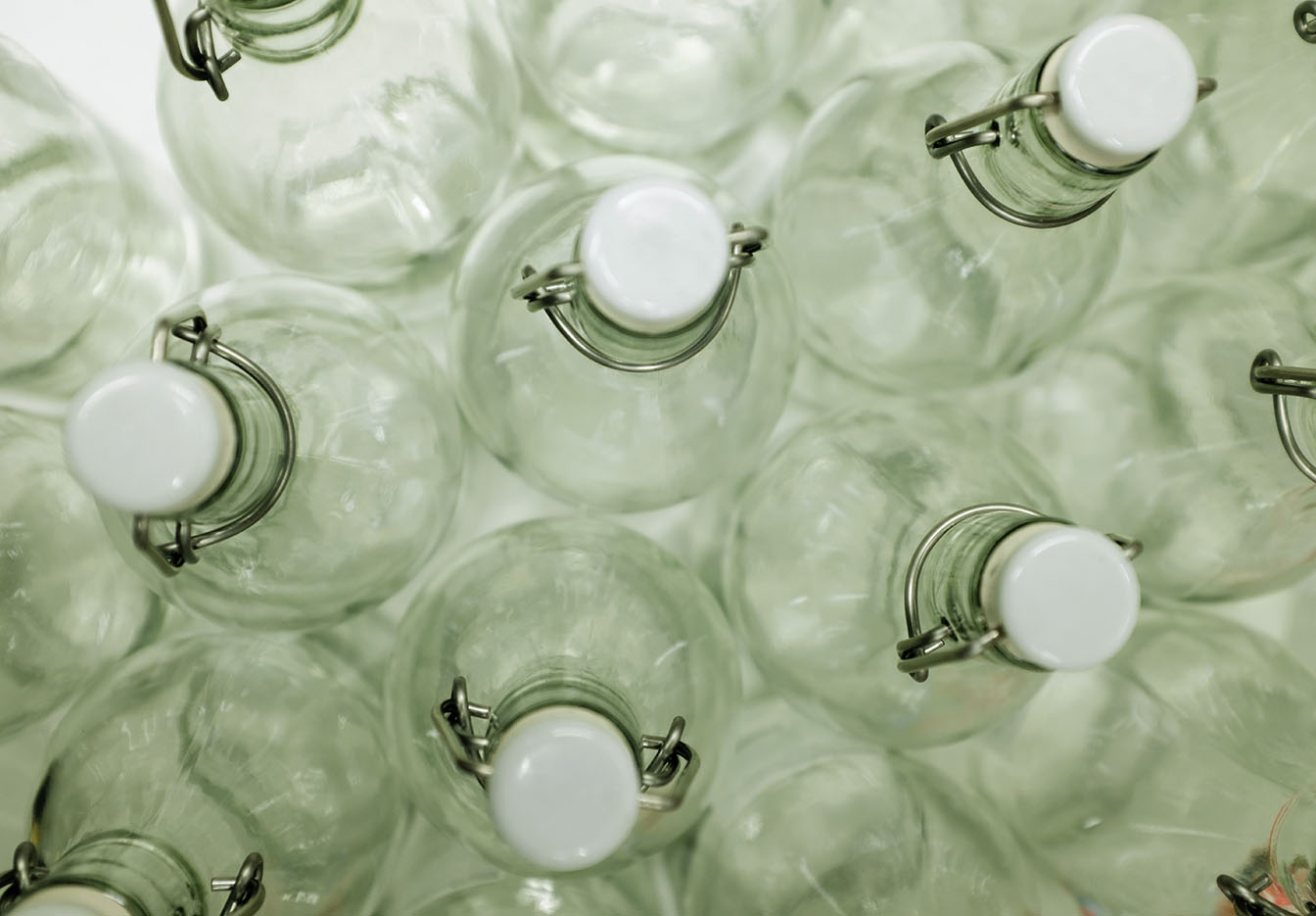Whether used in beverage bottles, containers for medicines, window glass, or glass fiber, glass is a component of many fundamental products used in everyday life. However, it is also currently facing immense challenges. The enormous increases in gas prices in recent years and the simultaneous demands for more sustainable production processes are a challenge for the entire industry. Innovative solutions are needed to ensure that the glass industry remains competitive in the long term.
Current challenges in the glass industry
The glass industry is particularly important as a supplier to other sectors such as the beverage industry. Rising price pressure from buyers and customers is intensifying the strain on the industry. As an energy-intensive industry with sensitive processes, it is particularly dependent on a secure and constant energy supply – and is therefore suffering considerably from the rise in natural gas prices.
Glass industry highly dependent on natural gas
The total energy consumption of the German glass industry, for example, amounted to around 289 petajoules in 2021 – putting it in fourth place among all industries (source: Statistisches Bundesamt). Up to 85 percent of this is accounted for by the glass melting process alone. This process requires extremely high temperatures of well over 1000 degrees, which is still primarily covered by natural gas today. The massive increases in the price of gas – primarily triggered by the war in Ukraine – are threatening the existence of many glass manufacturers. They are looking for ways to switch parts of their processes to alternative forms of energy. One problem here is the long lead times for adjustments to production processes.
Processes dependent on reliable energy supply
This is because high quality requirements and permanently running systems hardly allow any fluctuations in the energy supply – especially to prevent damage to the extremely cost-intensive melting tanks. Even a brief failure is enough to completely destroy them. In addition, conventional gas-powered furnaces with a service life of 20 years represent long-term investments for the companies, which are therefore utilised for as long as possible. Operators of glassworks fear a high technical risk when switching to purely electrically operated furnaces, as existing production cannot be converted easily.
Keeping the glass industry competitive
Nevertheless, the glass industry must reduce CO2 emissions to remain sustainable and economically viable, especially with rising prices for CO2 certificates. In addition to switching to renewable energies, the efficient use of energy is therefore also an important factor in cutting emissions, reducing costs and thus remaining competitive in the long term.
Increasing energy efficiency
By increasing energy efficiency, companies can significantly reduce their primary energy consumption and thus cut their emissions and energy costs – for example through waste heat recovery solutions. The use of digital technologies can help to identify and utilise untapped potential in this area. Intelligent energy management systems monitor processes and ensure that systems are optimally controlled. They also help to improve transparency with regard to the energy status of systems and processes.
Another way to increase energy efficiency is through recycling, i.e. the utilisation of used glass. As the chemical processes required for melting down the raw materials have already been completed, 25 percent less energy is consumed for pure cullet melting than for melting down raw materials. However, due to the high quality requirements, this is not possible for flat glass, but only for packaging glass.
Switching to renewable energies
In order to effectively reduce CO2 emissions, there is no alternative to switching to renewable energies in the long term. Green hydrogen is often brought into play as a replacement for natural gas – however, the still very low availability and high prices pose a problem here. The high temperatures and energy-intensive processes required during the production of glass make direct electrification much more complicated than in other industries. One option is to use furnaces with installed electrical auxiliary heating to cover at least part of the energy requirement with green electricity. It will be crucial to compensate for the volatility of wind and solar energy in order to provide a reliable supply of energy. Energy storage solutions play an important role here.
Thermal energy storage for a sustainable glass industry
Energy storage decouples energy production and consumption, allowing processes to be made significantly more flexible and the available energy to be used more efficiently. It also secures the supply in the event of power outages. Thermal energy storage systems such as the ThermalBattery™ from ENERGYNEST also offer the option of capturing excess waste heat and storing it for use at a later date. This further increases energy efficiency. The uncomplicated integration of the ThermalBattery™ into existing processes makes it an innovative solution that can be implemented at short notice.



